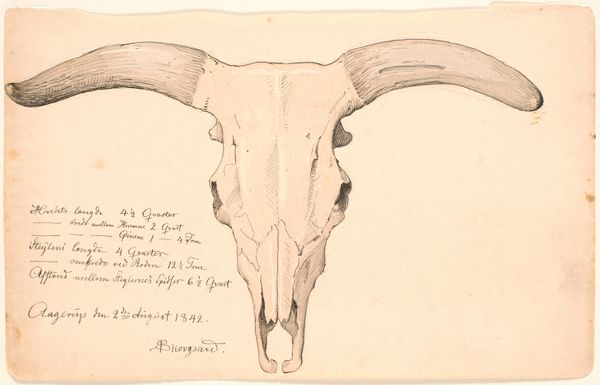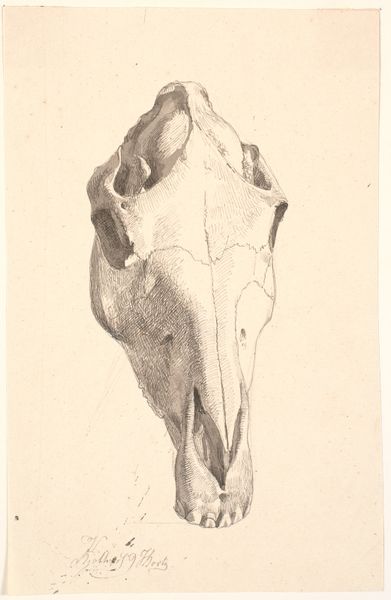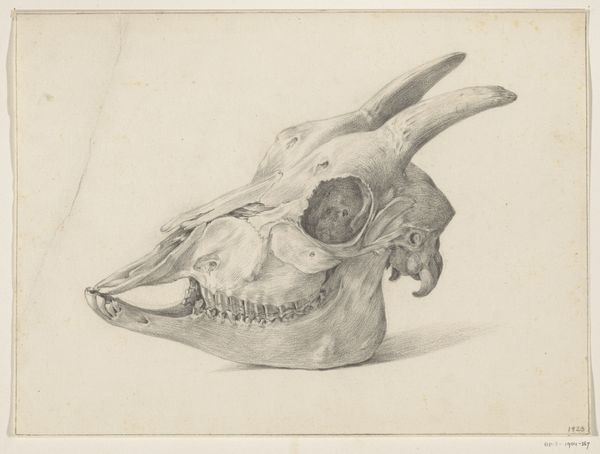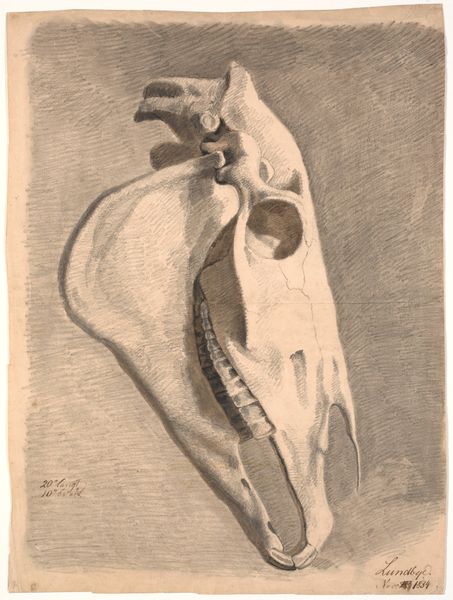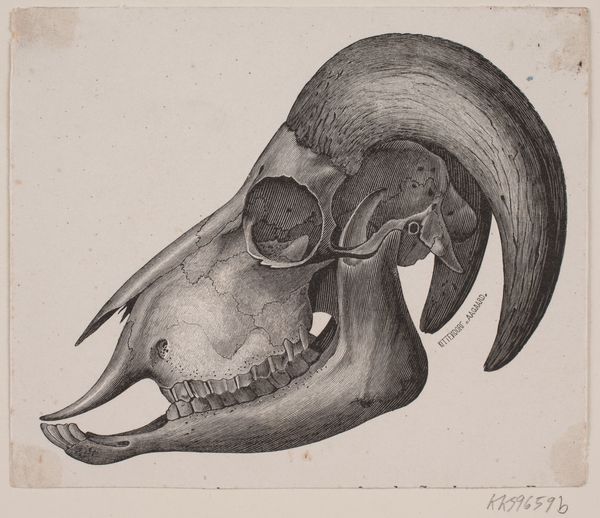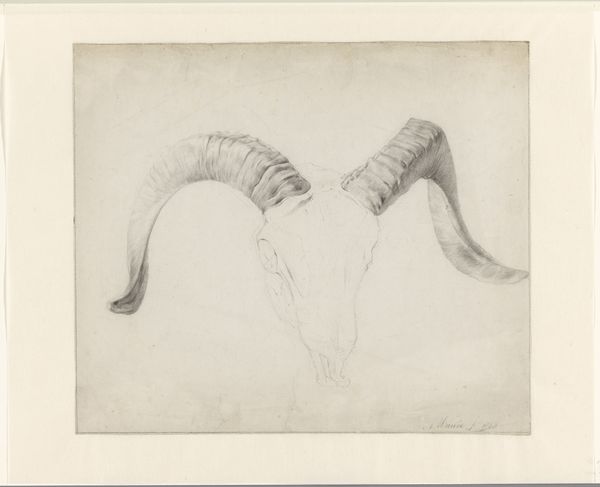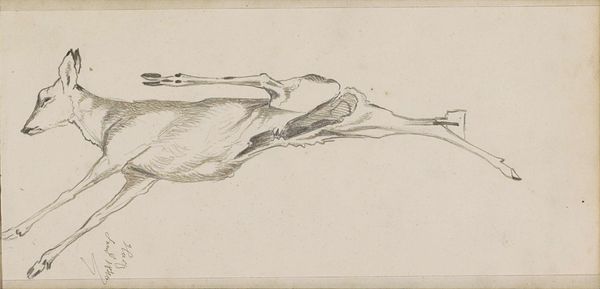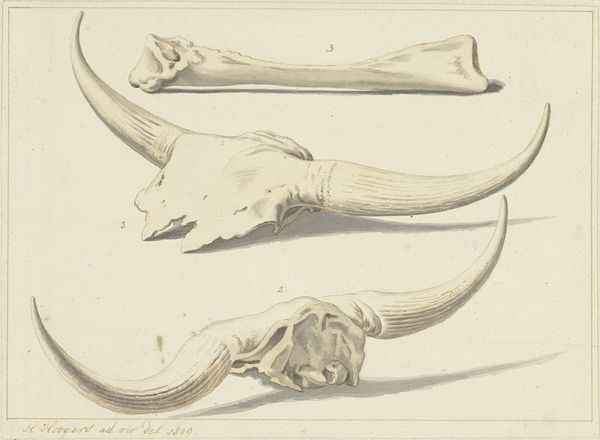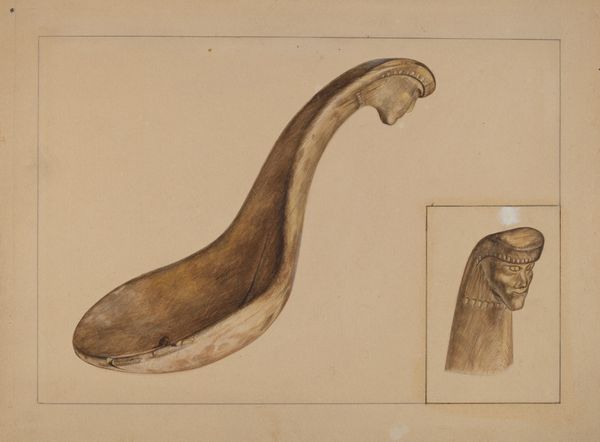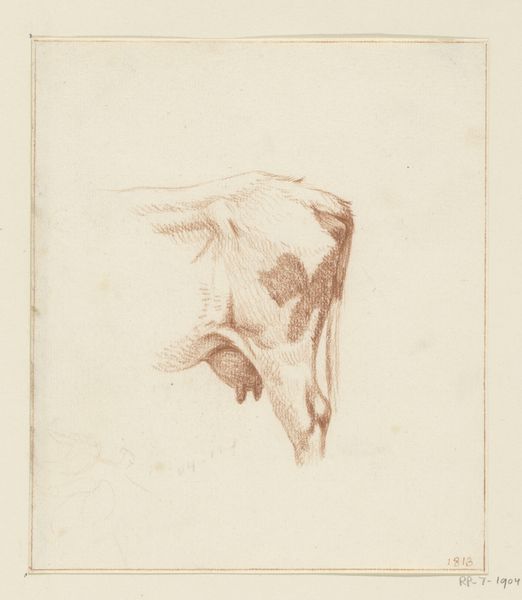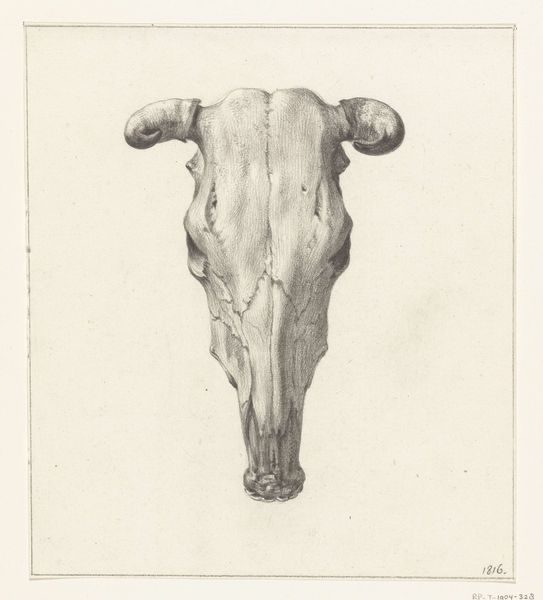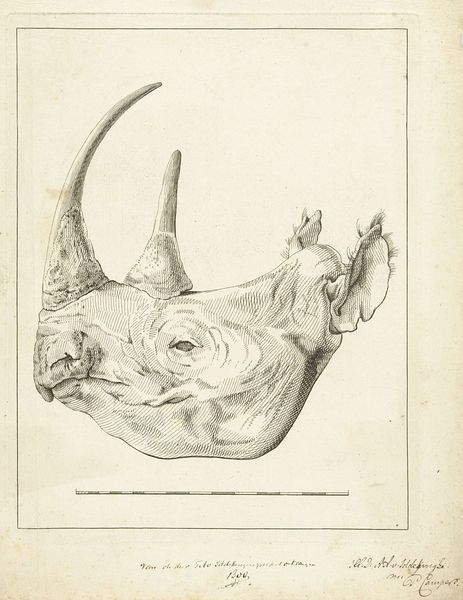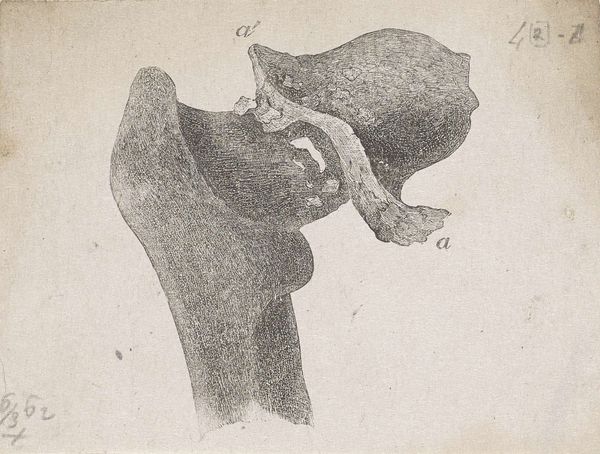
Kranium af en ko, i trekvart profil, det venstre horn krumt. 1842
0:00
0:00
drawing, pencil
#
drawing
#
pencil
#
realism
Dimensions: 218 mm (height) x 347 mm (width) (bladmaal)
Editor: This is P.C. Skovgaard’s “Skull of a Cow, in Three-Quarter Profile, the Left Horn Crooked” from 1842, rendered in pencil. I'm struck by how such a stark subject—a cow skull—can feel so serene and almost delicate in this drawing. The cross-hatching gives it a three-dimensional quality. What symbols or ideas stand out to you? Curator: This image certainly resonates with layers of meaning. Consider the tradition of the vanitas still life. Skulls were, and are, powerful memento mori – symbols reminding us of our mortality. But beyond that, think about the cow itself. Throughout history, the cow has been a symbol of nourishment, of abundance, particularly within agrarian societies. Editor: So the cow skull represents more than just death; it's the death of something that sustains life? Curator: Precisely! And Skovgaard, working in 1842, would have been keenly aware of Denmark's deep agricultural roots. Can you observe how the artist captures the textures of the bone and horn? The horn almost seems to want to defy death by its curved shape, representing a life in process or continuity. Notice how this image creates a memory and identity that persists in Danish cultural symbols. It reveals continuity through visual symbols. What else grabs your eye? Editor: I notice another faint skull sketched in the background… almost like a shadow of its former self. Curator: An excellent observation! What do you infer from it? Does that shadow modify how the "main" skull interacts with the tradition? Editor: That shadow maybe underscores that this skull and the being it represents, belongs to a long process. The first faint trace is less finished as a symbol, and invites to compare the more complete skull with its faint beginning. Curator: A very compelling point. It's fascinating how Skovgaard uses this single image to explore not just death, but the enduring presence of life and memory within a culture. Editor: It’s really made me reconsider how an image, even one of death, can be so layered with cultural meaning. Thanks!
Comments
No comments
Be the first to comment and join the conversation on the ultimate creative platform.
